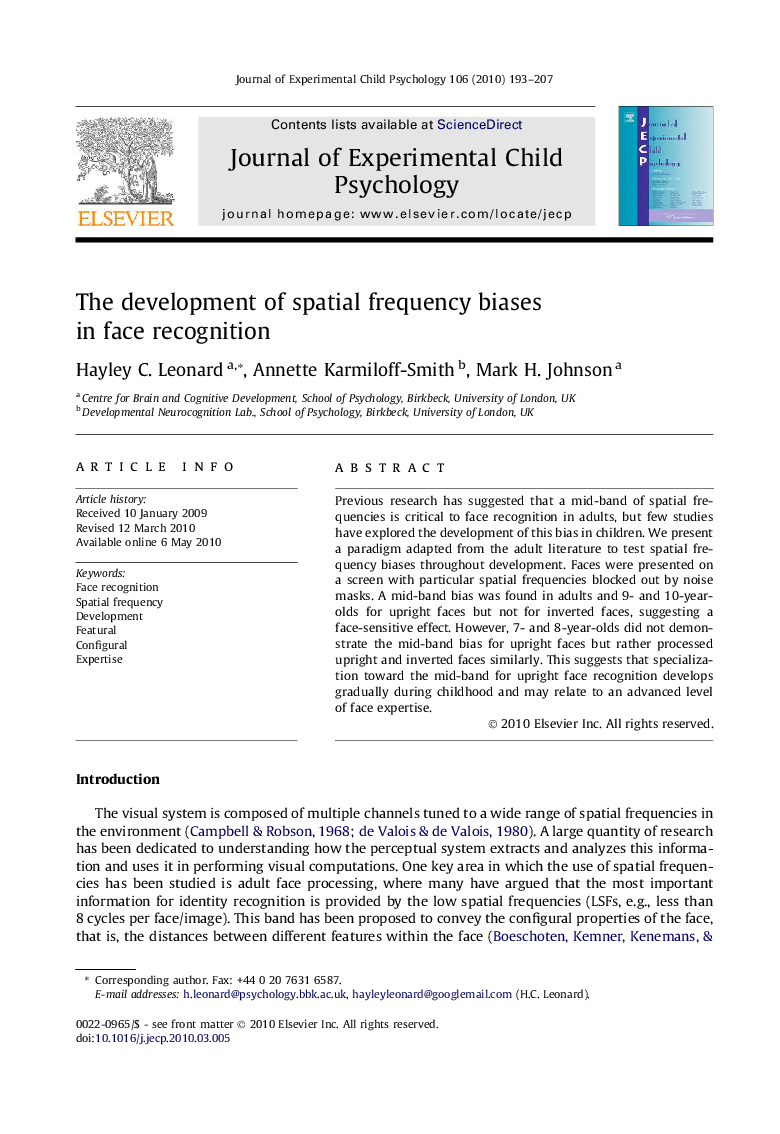| Article ID | Journal | Published Year | Pages | File Type |
|---|---|---|---|---|
| 918430 | Journal of Experimental Child Psychology | 2010 | 15 Pages |
Previous research has suggested that a mid-band of spatial frequencies is critical to face recognition in adults, but few studies have explored the development of this bias in children. We present a paradigm adapted from the adult literature to test spatial frequency biases throughout development. Faces were presented on a screen with particular spatial frequencies blocked out by noise masks. A mid-band bias was found in adults and 9- and 10-year-olds for upright faces but not for inverted faces, suggesting a face-sensitive effect. However, 7- and 8-year-olds did not demonstrate the mid-band bias for upright faces but rather processed upright and inverted faces similarly. This suggests that specialization toward the mid-band for upright face recognition develops gradually during childhood and may relate to an advanced level of face expertise.
